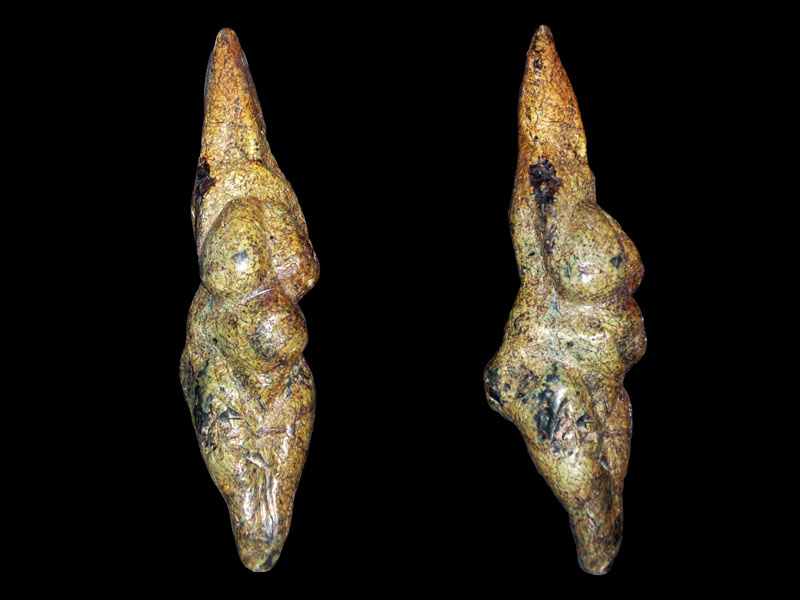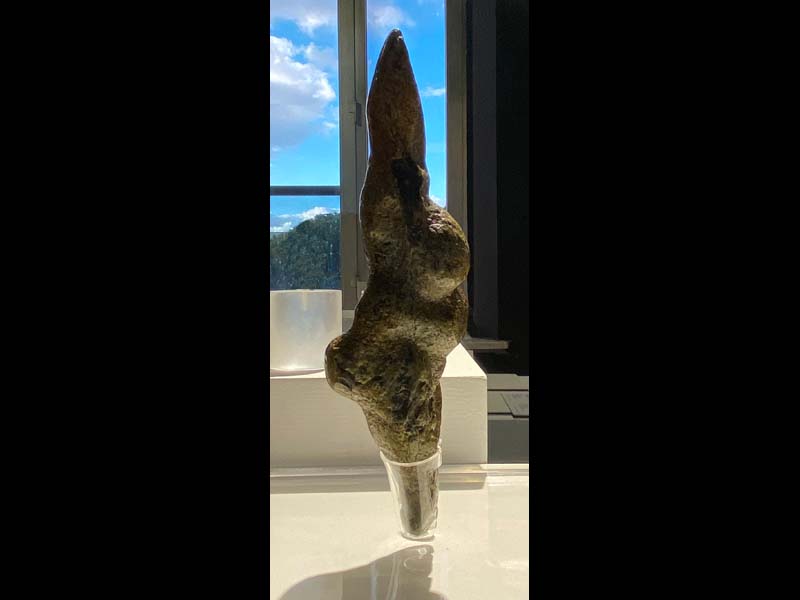It is a faceless female statuette in the round, with a conical, pointed head that takes up the shape of the legs, the latter joined together without any hint of feet; the full breasts are drooping, with the barely visible arms that seem to fold over the chest; the belly and buttocks are round. The whole statuette has a spindle-shaped appearance, made of serpentine and has a slight yellowish patina presumably due to surface oxidation due to clayey-ferruginous infiltrations of the soil; traces of manufacturing and handling are visible in various places as a result of roughing the material, tapping, sanding and polishing; on the left side and on the right arm there are traces of red ochre. No decorations are evident, but only a double longitudinal and bilateral incision, one of which continues on the anterior face to indicate the vulva and the other on the dorsal side to indicate the buttocks.



Historical notes
Found in 1925 by the unskilled worker Olindo Zambelli in the Podere Cà di Prà Martein, in the locality of Mulino di Savignano sul Panaro, in the province of Modena, about 2,5 km north-east of Savignano, in the Panaro valley, a tributary of the Po. Podere is located along the provincial road between Bologna and Vignola, at an altitude of about 106 meters above sea level
The statuette was found during excavation work on the foundations of a stable, at a depth of about 1 meter below the level of foot traffic, under a large block of stone resting on a layer of clay. The artifact was initially interpreted as an ancient weapon due to its pointed shape. The sculptor Giuseppe Graziosi, having learned of the find, obtained the find in exchange for two quintals of grapes; therefore, he asked for a consultation in Rome from Ugo Antonielli, then director of the Royal National Prehistoric Ethnographic Museum of Rome, discovering its international importance as one of the most prestigious Italian finds of prehistoric art, and donated it to the Roman institution, where it is still today preserved. The area was subject to subsequent excavations in 1926 but the presence of any prehistoric artefact is not reported in the report, despite the fact that a flint pebble was collected; the absence of ash or traces of combustion is underlined. The excavations were organized and directed by GC Montanari, replacing the inspector of the Superintendence Augusto Negrioli; his work aroused perplexity in the academic world, however scrupulous he was only an "extraordinary custodian", recently hired by the Superintendence, of whose specific competence and experience nothing is known. No further investigations were ever made.
CARD
LATEST PUBLISHED TEXTS
VISIT THE FACTSHEETS BY OBJECT

